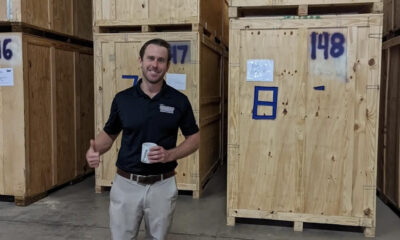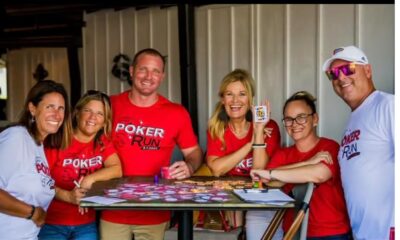Thrive
New details emerge on USF’s on-campus stadium plans

The pursuit of an on-campus stadium for the University of South Florida continues to march forward – the school has released some key details, including potential sites and possible dates for completion.
In September, Board of Trustees Chair Will Weatherford made the public declaration that the time has come for the stadium. At Tuesday’s BOT meeting, President Rhea Law said school officials are hard at work to make the dream of an on-campus stadium in Tampa a reality.
Michael Kelly, Vice President of Athletics, said staffers have been charting a course of action over the fall semester and formulating a feasible timeline for the transformative project.
“You measure twice and cut once, and make sure you do everything just right,” said Kelly.
Kelly said four locations on campus identified in a 2017 report are under consideration as sites for the new stadium. He added that a fifth site in the athletics district is also under analysis. Potential locations are evaluated based on their proximity to student housing, potential gameday experience and operational efficiency for a facility the university plans to use extensively beyond home football games.
“We want to use it much more than six or seven times a year,” said Kelly. “Which is what is going to be paramount as we build the scope of this overall project.”
One possible location is at the Southwest corner of Fowler Avenue and Bruce B. Downs Boulevard. Kelly said there is a lot of land available there on the research side of campus. Another potential site is on the intramural fields, near the Juniper-Poplar residence hall and the lake. Kelly said the MOSI site is again under consideration, as is Fowler Field, where the band currently practices.
The fifth and latest site the school is considering is the Sycamore Fields near the athletic district, where the Bulls held their first practices in 1996.
“It would be historical,” said Kelly. “That’s where our first practice was held, and that’s where we’re playing the rest of our games.”
Kelly relayed that several variables would determine when the stadium becomes a reality, “not the least of which will be the final funding plan,” but said the university is taking an aggressive track to bring the plan to fruition.
“If everything fell into place and the ball bounces the right way and everything that we want, we see the 2026 season as being something very aggressive in that time frame,” stated Kelly.
Kelly added that 2027 and 2028 are also possibilities, and a future date against a traditional Florida college football power stands out to him.
“I noted that on Sept. 4, 2027, we host the University of Miami,” Kelly said. “That could be a really good opening ceremony for a stadium …”
Weatherford replied that he loves the aggressive timeline and believes that students and alumni expect them to be aggressive in building the stadium.
Kelly stated the university has a lease with Raymond James Stadium until 2027, but can break the contract with 24 months’ notice.
“We’re in a good place with that,” said Kelly. “We’ll just have to be really mindful of that in 2024, where we see where we are and where our comfort level is at.”
Kelly believes building the new performance facility created momentum for the university. He said the school’s plan for a women’s lacrosse team and a new stadium builds on that momentum and makes USF more attractive for prestigious football conferences. He added admission to the next conference level would provide the university with an extra $20-$30 million annually.
Jay Stroman, Senior Vice President of Advancement and Alumni Affairs, said he and Kelly are leading the newly created stadium planning committee.
“This committee has met several times and will continue to meet until this plan comes to fruition,” said Stroman.
Additionally, Stroman described four subcommittees to explore site locations, revenue and finance, communications and marketing, and legal issues. The subcommittees meet every other week and report back to the planning committee. The planning committee has also enlisted the help of outside firms to assist with feasibility studies and data synthesis. Lastly, the committee has formed focus groups to gather feedback from students, faculty and the surrounding community.
“I can tell you right now, the overwhelming sentiment is a lot of excitement and a push to get this done sooner rather than later,” said Stroman.







